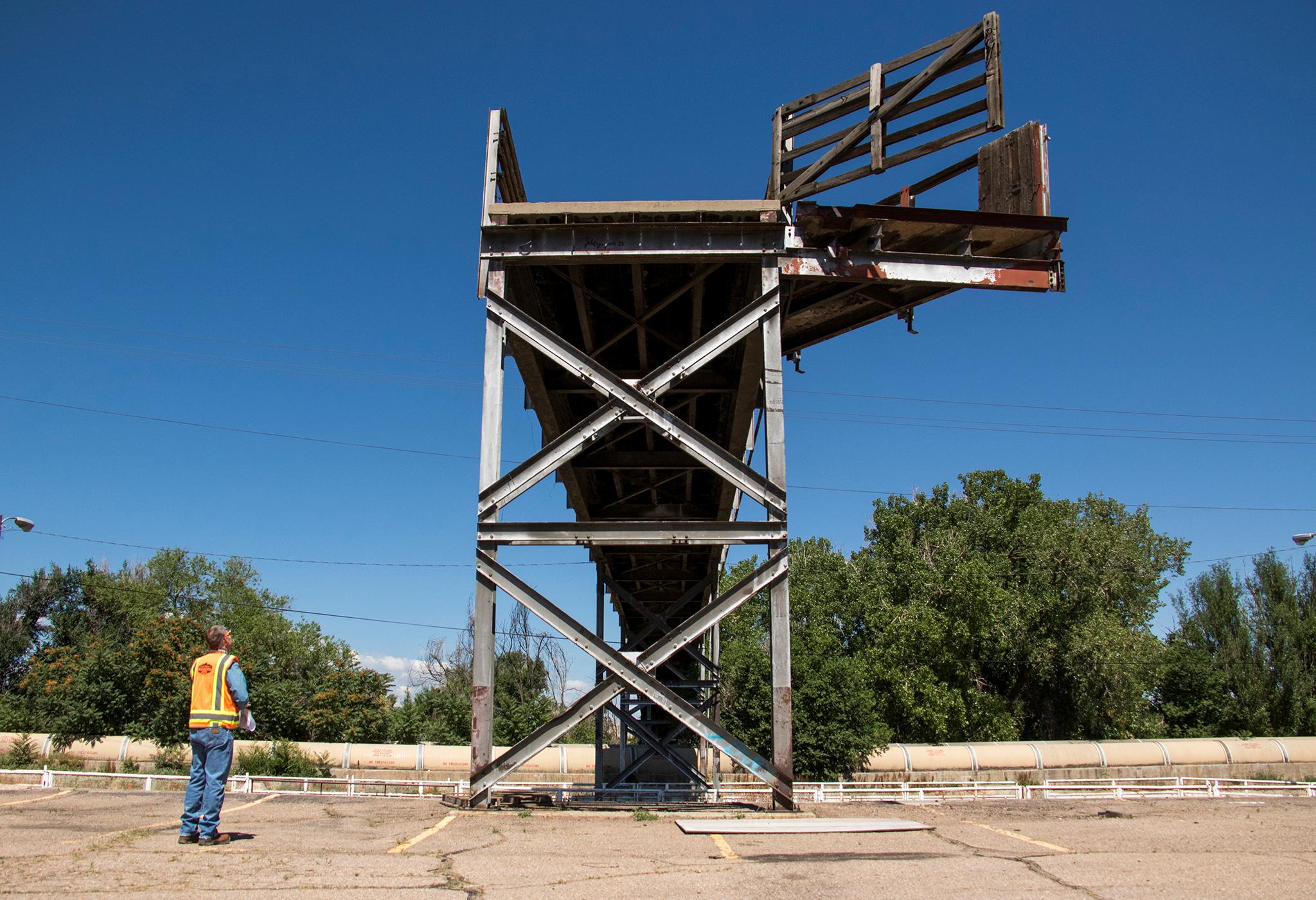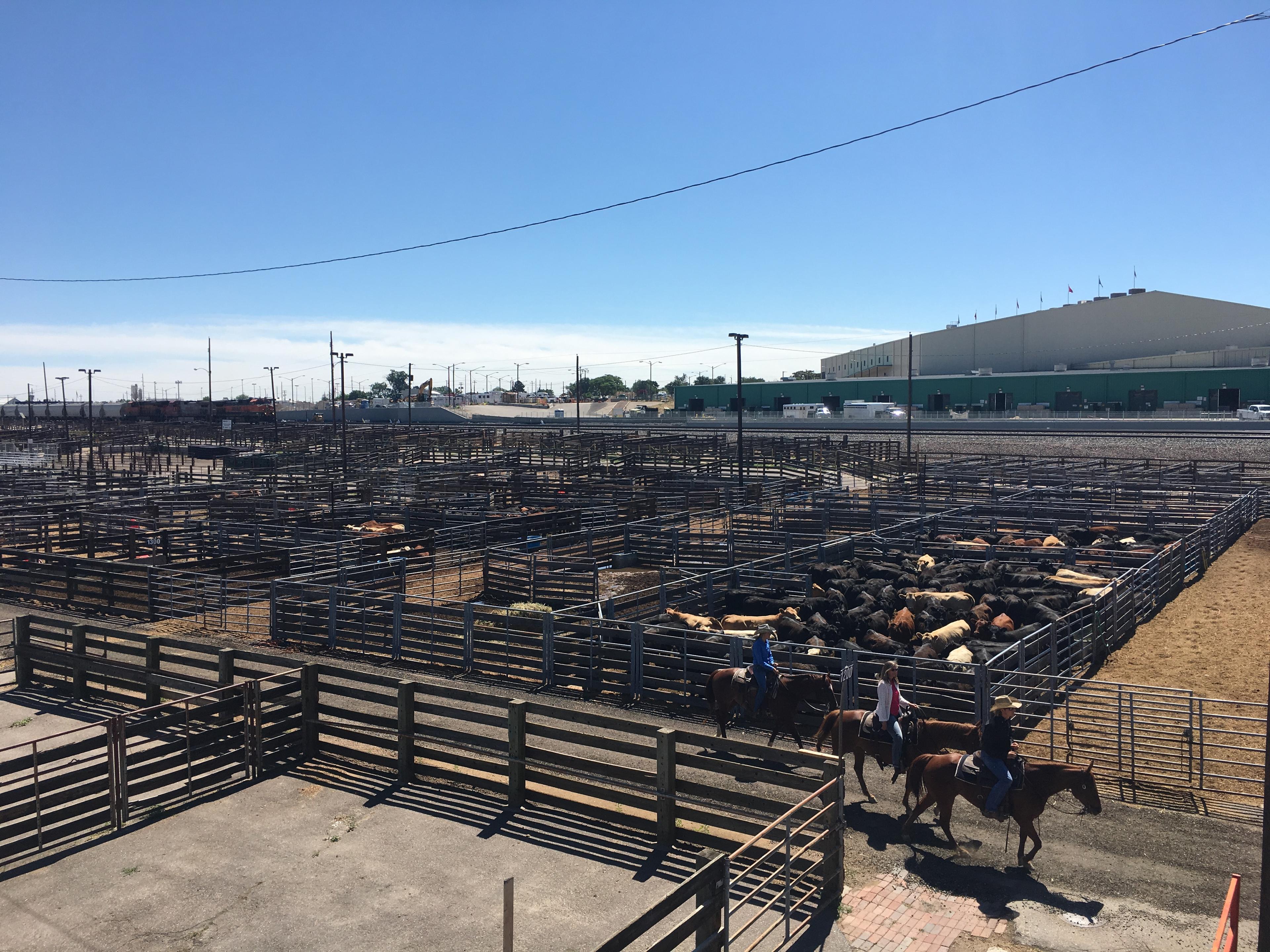Standing atop a concrete catwalk above the stockyard, the future of the National Western Stock Show becomes a little more clear.
"January 2019 is the last time the stockyards will look like this," said project manager Patrick O'Keefe. Down below, black and tan cattle filled a few pens in a sprawling grid, while riders on horseback navigated the pathways in between. In the distance, a freight train rumbled through the campus.
These pens have housed thousands of heads of cattle each year since the 1930s, but the familiar sight will be completely rearranged by the 2020 iteration of the annual livestock exposition and trade show.
After this January, the pens will be ported over to a new section of the property, making way for an "enormous" new livestock building that will stretch roughly a quarter mile long, according to O'Keefe.
"It's worth a visit to the historic stockyard this year," said Gretchen Hollrah, the city's executive director overseeing the $800 million, 250-acre redevelopment of this storied stretch of north Denver.

The old pens will be disassembled, with some of the historic elements preserved for use elsewhere in the site. Some ranching families have been visiting the same pens for generations. Planners also have identified 38 structures and elements of campus with historical value, including the "Armor" water tower, which could be moved a short distance.
Construction across campus will take years, but a carefully orchestrated process will keep the stock show itself operating each year. "It's a huge transition," said Liz Adams, a representative of the National Western Stock Show Association. "This whole thing is going to happen and we're going to keep the stock show running."
Meanwhile, the city will be consolidating the rail lines that criss-cross the area into a single channel -- which could open up the riverbanks for public use -- and tearing down industrial buildings on the north side of the site, clearing space for a permanent new home for the stock pens. The new 20-acre pens area will be reconfigurable, so it can host new types of events -- perhaps including auto shows, concerts and even motocross events -- during the off season, O'Keefe said.

Construction crews also will have to bury the sewer pipe that carries much of downtown Denver's human waste across the National Western site. One day, the heat of that waste will power a heating system for buildings on the campus. Combined with solar panels, it could make the center self-sustaining.
In Nov. 2019, crews could break ground on one of the development's major buildings: a water resources center to be run by Colorado State University. Besides hosting research labs and academic space, it could include an industrial kitchen, while a new animal health center also could host veterinary services aimed at nearby neighborhoods.
"This will really be an opportunity for us as a university to expand out," said Tiana Nelson, public relations director for CSU.

But there are still some big unknowns.
The development team has laid out the general shape of part of the new campus. But the future of the southeastern part of the campus -- home to the Stadium Arena and other popular facilities -- is still pretty hazy.
Known as the "triangle," the 60-acre southeastern section will definitely include a new arena, an exposition hall, structured parking, and the preservation of the historic "1909" building.
Planners say that the rehabilitated 1909 structure could include a "public market" similar to Pikes Place in Seattle. "Except instead of throwing the fish," Hollrah joked, they'll be "chucking ribeyes."
But even those grand plans will only take up a fraction of the southeastern area, leaving perhaps 42 acres or more for other development, according to early estimates. Later this year, the project team will put out a request for qualifications from developers who have ideas for the area. The potential uses include commercial and retail, Hollrah said.

We've also heard plenty of rumors that the area could be pitched as a site in a bid for the Olympic Games. Denver's Olympic planning committee has reviewed information on the area, but that's a separate process from the National Western Center development, Hollrah said.
We should have more information on that last section by next year, with construction potentially starting in 2020 or 2021.
"It'll be a very robust public discussion," Hollrah said.
For more: Check out our previous coverage of the National Western Center and its potential impact on Elyria-Swansea. You also can sign up for text and email updates on the city website.














